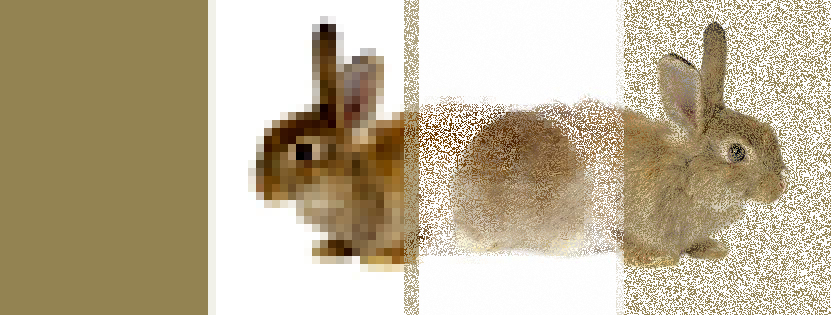1. From form to Gestalt to design
Designers are among those professionals who have shown a first and continued interest in the modern revival of semiotics. In search of a theory for a field of human practice characterized by a lack of conceptual discipline, designers, especially those formed in the Ulm School tradition, were willing to adopt semiotics as their theory, provided that semioticians pay attention to critical problems of design and not extend a logocratic model where something else seemed necessary. Maldonado (1967) undoubtedly deserves credit for being receptive to semiotics and making it part of his own design concept. At Theo Crosby’s initiative, and with the assistance of some of his students (Guy Bonsiepe deserves mention here), he published several articles dealing with semiotic concepts and their pertinence to design. This happened when Europe discovered Charles S. Peirce; when Bense, continuing his search for a scientific foundation of aesthetics, arrived at sign theory (1970, 1971), and when East European designers, facing constraints typical of dogmatic thinking, approached the problems of codes with new hope for their future work. On the American continent, designers' interest in semiotics was expressed quite late through students and scholars from Ulm or by contamination from other fields—predominantly from literary studies.
This short historic note is not meant to be a rigorous account of names and events, but an explanation of the work that results from applying semiotics to design or from looking at design from the semiotic perspective. A certain turn in my life put me in the position of being able to devote several years to the issue. Consequently, I take credit for teaching semiotics to designers, for initiating courses for practicing designers who wanted to apply semiotics in their work, and for applying semiotic principles on my own to design work pertinent to computers and artificial intelligence (Nadin, 1986).
Design happens to be a rather unsettled field of human creativity, without critical method (and without methodic criticism), and without the means to construct one for itself. People who worked in typography, printing/printmaking, jewelry design, architecture, textile, heraldry, ceramics, fashion, and the arts started identifying themselves as designers less than a century ago. Design is a general concept, reflected in the underlying quality of objects, actions and representations which various people make possible in a given culture and within a value framework. To design means, among other things, to plan, to anticipate according to a devised course of events in view of a goal and under the influence of environment.
Björn Engholm (1984), in an article that deserves the attention of both designers and semioticians, referred to a time "Als man zu Design noch Gestaltung oder Formgebung sagte" (i.e., when design was still called Gestaltung or formation/form-giving). The shift in terminology he describes is taken a bit too seriously, to the extreme that, under new names, design products "identified as good" offend the eye. “In today's design, ideology is written in upper-case letters. American design or Italian design is no longer concerned with a subject, but with representation. Design degenerates into sign,” [translation mine].
In fact, the shift from paradigms of previous aesthetic and morphological theories to structure and, more recently, to sign proves far more influential than the change in terminology. In a broader perspective than the one Engholm suggests, we can ascertain that the relation to art, science, and technology defines the type of design. Let me apply this thesis to main schools of design that are representative of the evolution of our concept of design. I will use a simple diagramming procedure with the aim of characterizing these schools, and also show the dynamics of change. This is not a substitute for the theoretic analysis; it submits for discussion, preliminary results in order to present them as a working hypothesis. [Ler mais...]
References
Bense, Max (1970). Semiotik. Allgemeine Theorie der Zeichen. Baden-Baden: Agis.
— (1971). Zeichen und Design (Semiotische Ästhetik). Baden-Baden: Agis.
Englholm, Björn (1984) Politik und Sprache, in Form 1 (1984) 6-7).
Jakobson, Roman (1967). Satructure of Language and its Mathematical Aspects, in Essais de linguistique generale. Paris: Editions de Minuit, pp. 87-99.
Maldonado, Tomas (1967). Visual Signs in Operative and Persuasive Communication, in UPPERCASE 5 (Theo Crosby, Ed.). Tonbridge, Kent: Whitefriars.
Matthews, Robert (1986). Talking your language, in Design 8, 40/1.
Mukarovsky, Jan (1936, 1979). Aesthetic Function, Norm, and Value as Social Facts. Ann Arbor: The University of Michigan, Slavic Languages Department.
Nadin, Mihai (1984). On the Meaning of the Visual, in Semiotica 3/4, pp. 335-377.
— (1986). Visual Semiosis Applied to Computer Graphics, in ASEE Conference Proceedings, pp.498-501.
Simon, Herbert (1982). The Sciences of the Artificial. Cambridge MA: MIT Press.
…
skip to main |
skip to sidebar
glossário tipográfico
tipografias
A
arquitectura
artes
B
bancos de imagem
bibliotecas
bibliotecas digitais
bienais
bolsas
C
cinema
cit_Anabela Gradim
cit_Andy Cameron
cit_António Fidalgo
cit_António Pardal Monteiro
cit_António Victorino d'Almeida
cit_Eadweard Muybridge
cit_Edward Tufte
cit_Federico Fellini
cit_Jorge Spencer
cit_José A.Bragança Miranda
cit_Joseph Pulitzer
cit_Kohei Sugiura
cit_Lao Tsé
cit_Mei-Mei Berssenbrugge
cit_Michael Bach
cit_Norberto Chaves
cit_Richard Wagner
cit_Victor Papanek
citações
conferências
cor
cultura
D
data visualization
desenho
design
design de comunicação
design de moda
design de produto
design inclusivo
design industrial
dissertações
documentários
E
eco-design
estética
estudos em comunicação
eventos
F
fotografia
G
galerias
I
Instituições
interfaces
investigação
J
jornais
L
livros
livros_online
livros_tipografia
M
marcas
motion graphics
multimédia
museus
música
P
pessoas
portfolio
publicações
R
recursos
revistas
S
semiótica
T
teatros
teorias
teses
tipografia
tutoriais
U
universidades
V
visual effects
W
web design
web sites



